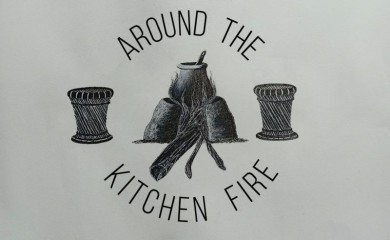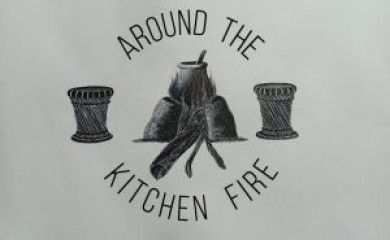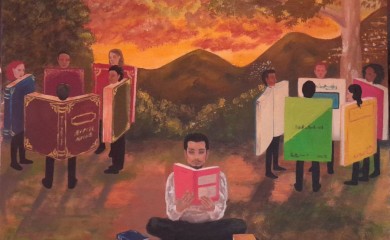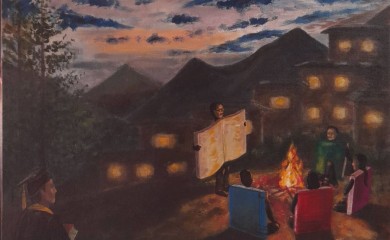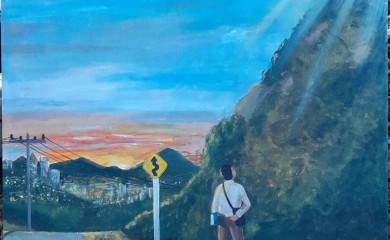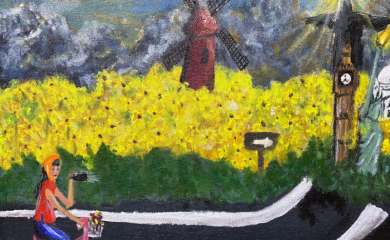Dr Brainerd PrinceDirector, CTLC and Associate Professor, Plaksha UniversityBoth civilizational and family cultures play a critical part in determining fundamental behaviour patterns from childhood. Civilisatio
Support The Morung Express. Your Contributions Matter Click Here
Around the Kitchen Fire
- We have finally come to the end of this long series on research design and how to write a research script. In the last column, we looked at how we could articulate our voice through the argument that we put for
- Dr Brainerd PrinceThe research is finally complete. We began with a significant problem in the world and identified a theme we wanted to pursue. Then we looked up the correlating thematic within a particul
- Dr Brainerd PrinceIn the last column, we looked at how we could use research methods, both quantitative and qualitative, to collect and analyse different types of data. We made the distinction between data in t
- By Brainerd PrinceIn our last article, we started the conversation about methods, and methods being the hands of research. To recap, the red bucket gives us a research question; the green bucket gives us the da
- Dr Brainerd PrinceIn our previous article, we discussed the "yellow bucket" of methodology, discussing how methodology pertains to both the eyes and the hands of research. The eyes represent conceptual framewor
- Brainerd PrinceThis article continues our conversation on research methodology. In the last column, I introduced the idea of eyes and hands as two parts of methodology for any research. We had a little introduc
- Jia Bhargava, Tanay SrinivasaDNA is the building block of life. It consists of a recurring sequence of four chemical bases. The arrangement of these bases encodes vital information necessary for various biologi
- Dr Brainerd PrinceWe’ve spent a lot of time looking at how a research project begins in the real world of the researcher and then transitions into the world of texts, within the boundaries of a discipline and
- Dr Brainerd PrinceIn the previous column, we spoke about the green bucket being the bucket of primary sources and solutions to the research question. The goal was to identify an appropriate object of research t
- Dr Brainerd PrincePreviously, in this column, we discussed the idea of the three buckets, red, yellow, and green, as an analogy and visual metaphor for the process of research. We focused on the red bucket as f
- Dr Brainerd PrinceWe began this story about the philosophy and practice of research with three buckets, similar to the colours of the traffic lights: red, green and yellow. All we have said until now has had to
- Excellence through Experiential LearningDr Brainerd PrinceThe Indian education system is plagued with an obsession for grades, more so amongst the STEM and engineering fraternity. According to Aspiring Minds, a
- Dr Brainerd PrinceWe concluded the last issue by saying that once we have used the technique of committed reading and read through the key texts of the critical bibliography we had put together on the thematic,
- Designing a Research ProposalDr Brainerd PrinceWe have indeed arrived at our academic home in the mountain. We have located the research community or the academic discipline in which we want to locate our resea
- Dr Brainerd PrinceI have always found myself happy and thriving in the first stage of a start-up. There is a certain adrenaline rush, with all the buzz – late nights of never-ending work, exciting conversatio
- Dr Brainerd PrinceThe bags are packed, the water bottle shut tight, and the rucksack firmly secured on the back. The researcher, all tooled up, is ready to begin her climb.She is very clear in her head about wh
- Dr Brainerd PrinceWe have used the image and metaphor of the mountain as a place to do academic work, away from the city. We find ourselves at the foot of the academic mountain. We have identified a real-life p
- Dr Brainerd PrinceA quick review, ofwhere we have got in this story so far,might be useful in setting the context for our next steps. We began with being in a posture of an authentic search in which we fin
- Dr Brainerd PrinceThis last month, I have been teaching about ‘intentionality’. The word is an abstract noun, and hence is quite distant from our everyday usage. Frequently used terms that are connected to



